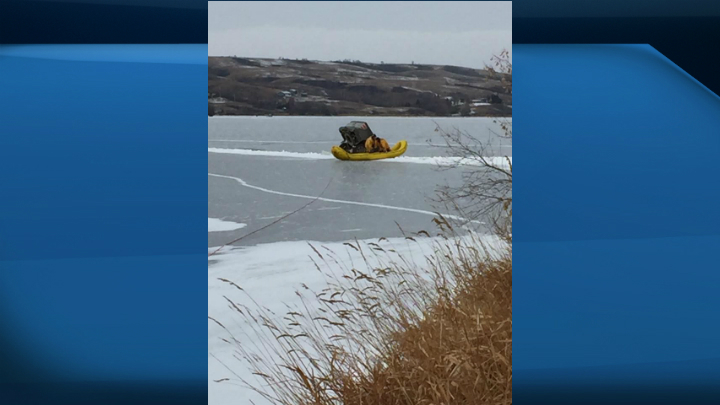The onset of cold weather doesn’t necessarily mean the ice is safe yet to venture out on Saskatchewan lakes and rivers.

On Saturday, a truck went through the ice at Buffalo Pound Lake north of Moose Jaw.
The two men inside were able to get out safely.
READ MORE: Pickup truck falls through ice at Buffalo Pound Lake in Saskatchewan
Officials with the Ministry of Environment said the thickness should be tested before heading out on the ice.
There should be at least 10 centimetres (four inches) of ice for walking, 15 cm (six inches) for driving a snowmobile or ATV, 20 cm (eight inches) for cars and light trucks and 30 cm (12 inches) for heavy trucks.
Ice should also be clear.
Officials said although these are guidelines, there are other considerations to keep in mind before heading out on the ice.
Ice should be avoided if it is slushy in appearance, has thawed then froze again, is near moving water, is layered due to sudden temperature changes or has structures such as pressure ridges on it.
READ MORE: Firefighters rescue moose stuck in ice in New Brunswick river
Officials also said that ice does not freeze uniformly and ice strength can vary from one area to another area.
They are also reminding people that any activity on ice comes with risk and that thickness is just a guideline in making a decision on whether to head out on the ice.


Comments